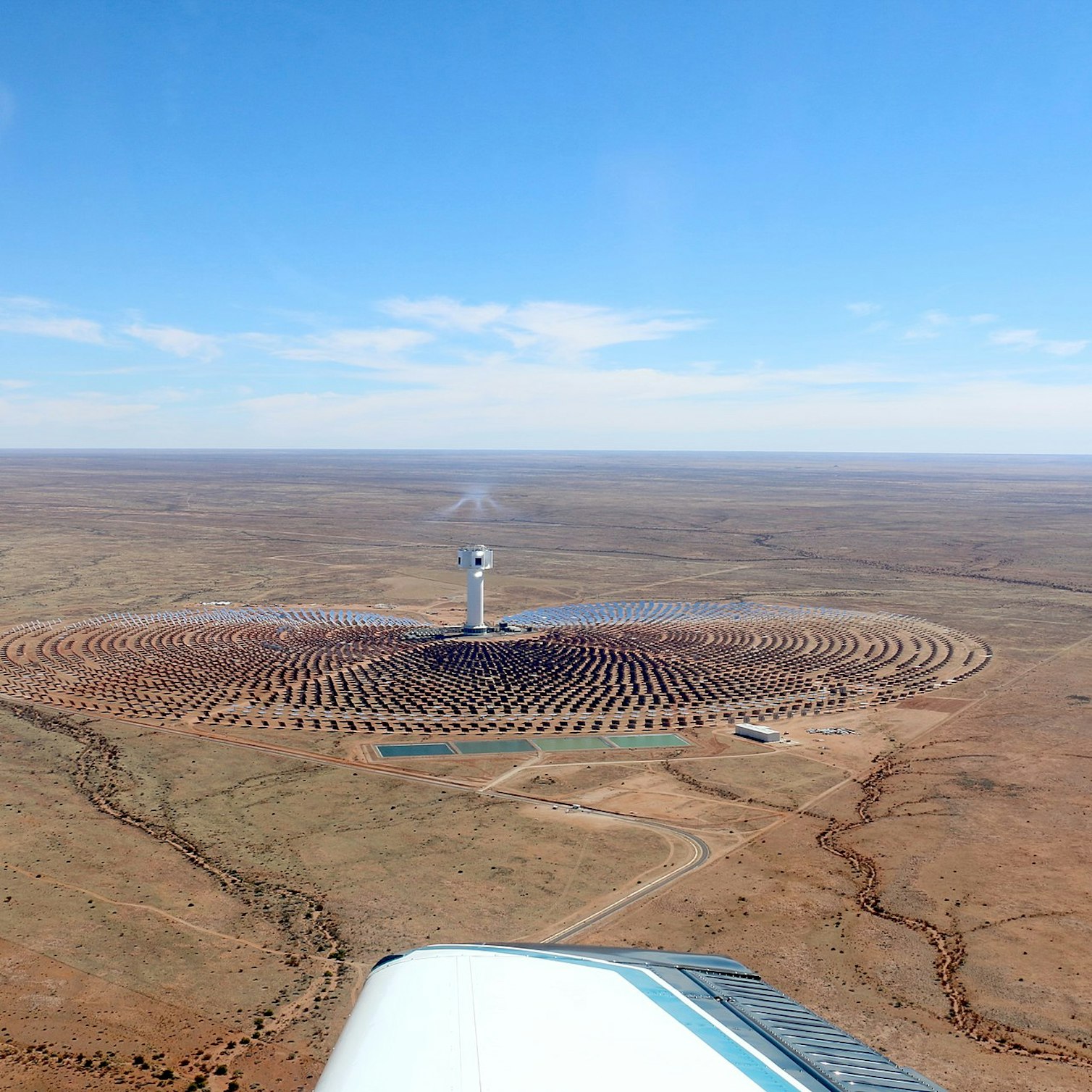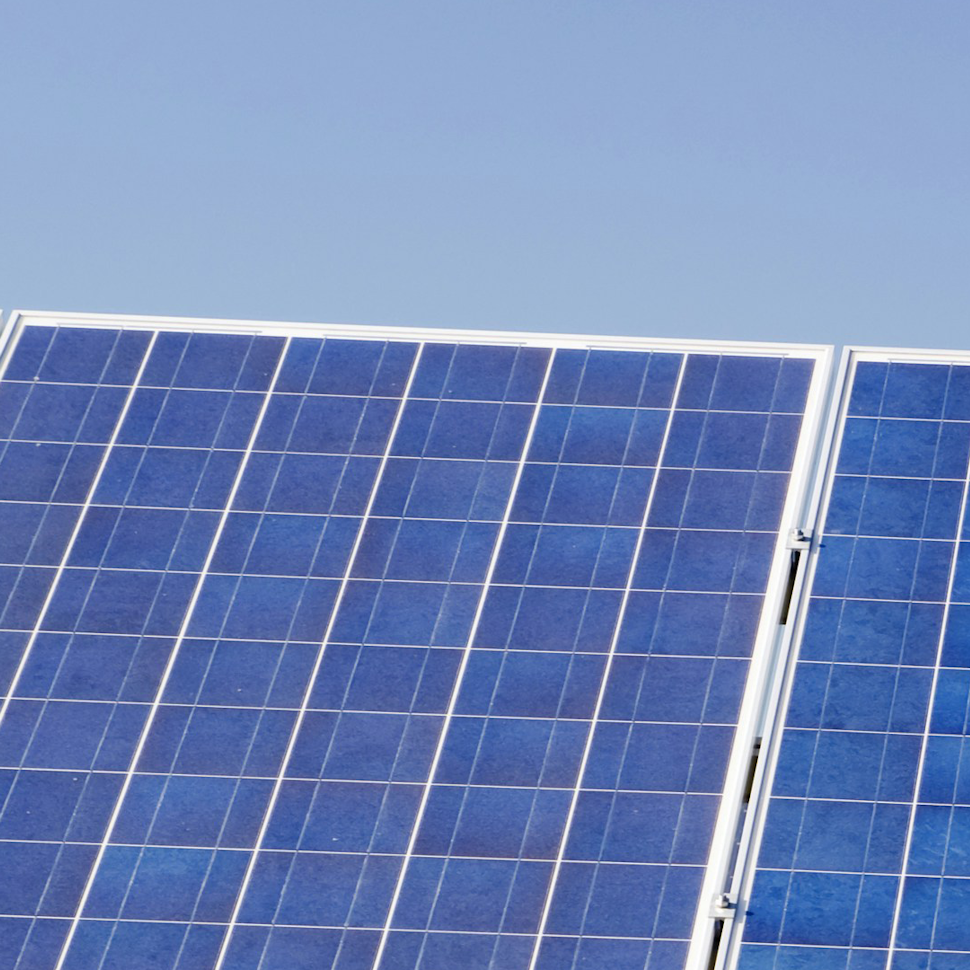- Solar energy blog
- Concentrated solar: An unlikely comeback?
Concentrated solar: An unlikely comeback?
Once described as obsolete, the concentrated solar power market ballooned to $53 billion in 2023 and is still growing. Here’s why CSP is making a comeback.



Content
Once considered flawed and too expensive, concentrated solar power (CSP) seems to have found its second wind. The market ballooned to $53 billion in 2023 and is expected to reach $212 billion by 2032, a steady 17% annual growth.
With this renewed interest, governments around the globe are investing in improving this overlooked technology. The US recently broke ground on a new G3P3 plant that promises improved conversion efficiencies and thermal storage; India is betting 50% of its renewable tenders on modular CSP to meet rising domestic demand; and Australia is backing a new installation and developing ways to use ceramic particles to capture and store CSP heat.
To learn more about what industry professionals think about the future of renewables, download our Renewable Energy & Solar Research Report 2024. The report gives a snapshot of trends, innovations, and preferences drawn from an industry survey and an analysis of solar simulations on the RatedPower Platform.
But what is concentrated solar power exactly? And why is it suddenly making a comeback? We explore this and more below.

Bird's eye view of Khi Solar One, South Africa. By Hp.Baumeler, CC BY-SA 4.0.
What is concentrated solar?
Concentrated solar power uses special reflectors to focus the sun’s energy onto receivers that capture and store heat in gas, liquid, or solid particles. The stored heat can either power a steam turbine and produce electricity immediately or be saved for later use.
Unlike old CSP plants that required vast swaths of land and complex tracking systems, new installations are modular and easier to manage. They can be rearranged and incrementally expanded for various site conditions and energy demands.
They’re also becoming more reliable. New thermal storage systems allow CSP plants to continue generating electricity even when the sun isn’t shining. They can be paired with other power sources like geothermal, natural gas, or biofuels to create hybrid plants ready to provide on-demand power. During periods of low solar radiation, these hybrid plants can also switch to fossil fuels to deliver consistent energy.

What are the types of concentrated solar power systems?
All CSP systems use the same basic principle: they convert concentrated solar thermal energy into electricity. Here’s a closer look at how various types do this:
Parabolic trough systems
These systems use curved trough-shaped reflectors to focus the sun’s energy onto a receiver pipe. Aligned in parallel rows, these reflectors allow single-axis tracking from east to west throughout the day. The heat-transfer fluid inside the pipe (typically thermal oil) heats up to 393ºC and powers a conventional steam generator to produce electricity.
Parabolic trough systems are the most cost-effective on a utility scale, which is why 90% of CSPs in commercial operation as of 2018 use this setup. Hundreds of parabolic trough plants have been built around the world since 2007, the largest being the 580-megawatt Noor Ouarzazate Solar Complex in Morocco.
Solar power tower
Also known as central receiver systems, this CSP type uses heliostats (sun-tracking mirrors) to direct sunlight to a receiver at the top of a tower. The heat-transfer fluid in the receiver heats up to 600ºC and generates steam that drives a turbine generator to produce electricity.
Power towers are sometimes called solar towers, molten salt towers, or receiver power plants, depending on their design and the chosen heat transfer fluid. Newer projects can store heat energy in thermal storage banks for several hours before being used to power a turbine.
Linear Fresnel reflectors
This CSP type operates similarly to parabolic trough systems but uses long rows of mirrors laid on the ground and mounted at specific angles to focus sunlight onto a receiver pipe above. These mirrors are usually aligned in a north-south orientation to maximize energy collection throughout the year. They can also include storage or generate steam for direct use, much like trough and tower systems.
Parabolic dish
This setup features a dish-shaped concentrator with a two-axis tracking system to follow the sun. It reflects solar radiation onto a receiver mounted at the focal point. The heat collected spins a receiver-mounted Stirling machine or turbine that turns this heat into mechanical work, which is then used to drive a generator which produces electricity.
Why isn't concentrated solar widely used anymore?
The failure of first-generation CSP plants highlighted this technology’s shortcomings and fueled broad skepticism around its viability for many years. More cost-effective renewables like solar panels and wind turbines overshadowed this technology before it could flourish. Here are some of the other reasons standing in the way of its widespread adoption:
Scale limitations
One of CSP’s most significant disadvantages is that it needs to be large-scale to be economically viable, unlike solar photovoltaics that can be installed in smaller and more accessible units.
Environmental concerns
CSP needs large land areas and a lot of water for cooling. The technology can also threaten local wildlife, as intense light concentrations can harm birds.
Higher cost
Concentrated solar has one of the highest LCOEs among major utility-scale power sources. However, this might change soon. The US Department of Energy aims to minimize these costs by 2030 and position CSP to compete with fossil fuels.
What are the advantages of concentrated solar?
Designed for efficiency, modern CSP systems promise to solve the problems apparent in traditional installations.
Better thermal energy storage
New CSP systems can store heat in thermal buffer materials that are cheaper than lithium batteries used in PV installations. These heat banks are also more efficient for long-duration applications and are less susceptible to degradation over time.
Clean energy
CSP transforms sunlight into electricity without emissions. Even the waste heat it generates can be repurposed for water desalination.
Industrial heat applications
CSP is a promising alternative to fossil fuels in energy-intensive industries such as cement and steel production.
Complements other renewables
CSP’s thermal storage capabilities allow it to supply both continuous and on-demand power. It’s a good hedge against solar photovoltaics and wind energy variability, which depend on specific weather conditions.
Is concentrated solar making a comeback?
Concentrated solar is making a comeback. The International Energy Agency expects the global CSP fleet to reach 73 GW by 2030, 281 GW by 2040, and 426 GW by 2050.
The driving force? CSP’s unique ability to store energy overnight. When deployed effectively, concentrated solar is still considered superior for extended retention.
Analysts predict that modern CSP will be the cheapest way to bank solar energy for 8 to 24 hours by 2050, providing the medium-duration storage we need to break away from coal- and gas-fired generators that supply most of our nighttime electricity.
For example, 247Solar’s modular CSP systems promise to store excess heat for 18 hours in inert materials like iron slag, ceramic pellets, and sand, avoiding the problems associated with early-gen setups that require molten salt. When combined with photovoltaic panels, such systems can deliver dependable zero-carbon power round-the-clock. PV can generate power during the day, while CSP stores excess energy for nighttime use.
Renewed government interest is also helping push the boundaries of concentrated solar. In 2023, the US started building a CSP farm in New Mexico that uses large containers of superheated sand to store solar energy.
Similarly, India is investing in CSP to drive microgrids and industries, ultimately creating a reliable baseload power source for its fast-growing economy. Australia is also looking to generate clean and low-cost dispatchable power from a new VS1 plant in Port Augusta, the first commercial-scale CSP installation in the country.
The future of concentrated solar
Technological advancements like modular designs and next-gen thermal storage are putting concentrated solar back on the map. As more governments and industries recognize CSP’s potential to deliver continuous clean energy on demand, investments in this sector will likely continue to grow.
2025 Trends: Renewable Energy & Solar Research Report
Get key insights and data from an industry-wide survey and solar simulations on the RatedPower platform. Download now to uncover critical trends and challenges shaping the future of renewables.

Latest stories
Related posts
Technology and engineering
Innovation in renewable energy: Developments expected in 2025
We look at the 10 biggest renewable industry developments that are making a green future possible, including perovskite solar cells, green hydrogen, and more.
Updated 18 MAR, 25

Technology and engineering
What the future holds for the longevity and efficiency of solar panels
Tests done by the French photovoltaics group Hespul showed that the panels, installed in 1992, are still operating at an astonishing 79.5% efficiency. Read on to find out more.
Updated 4 MAR, 25

Technology and engineering
Organic solar cells: Benefits, limitations & opportunities
In this article, we look at what organic solar cells are, how they differ from standard solar cells, how they work, their benefits and drawbacks, and what the future of organic solar cells looks like.
Updated 22 OCT, 24

- RatedPower
- Solar energy blog
- Concentrated solar: An unlikely comeback?